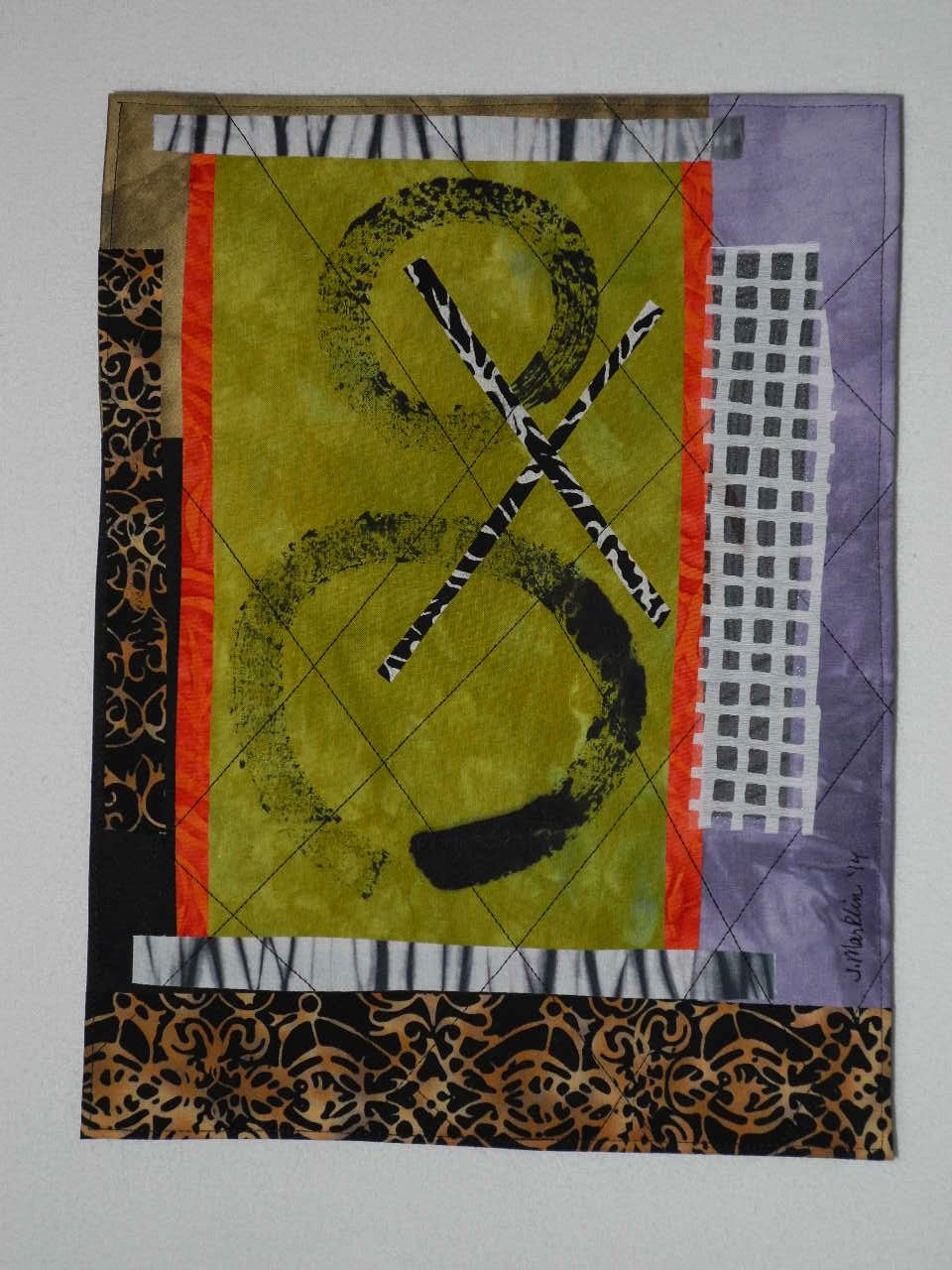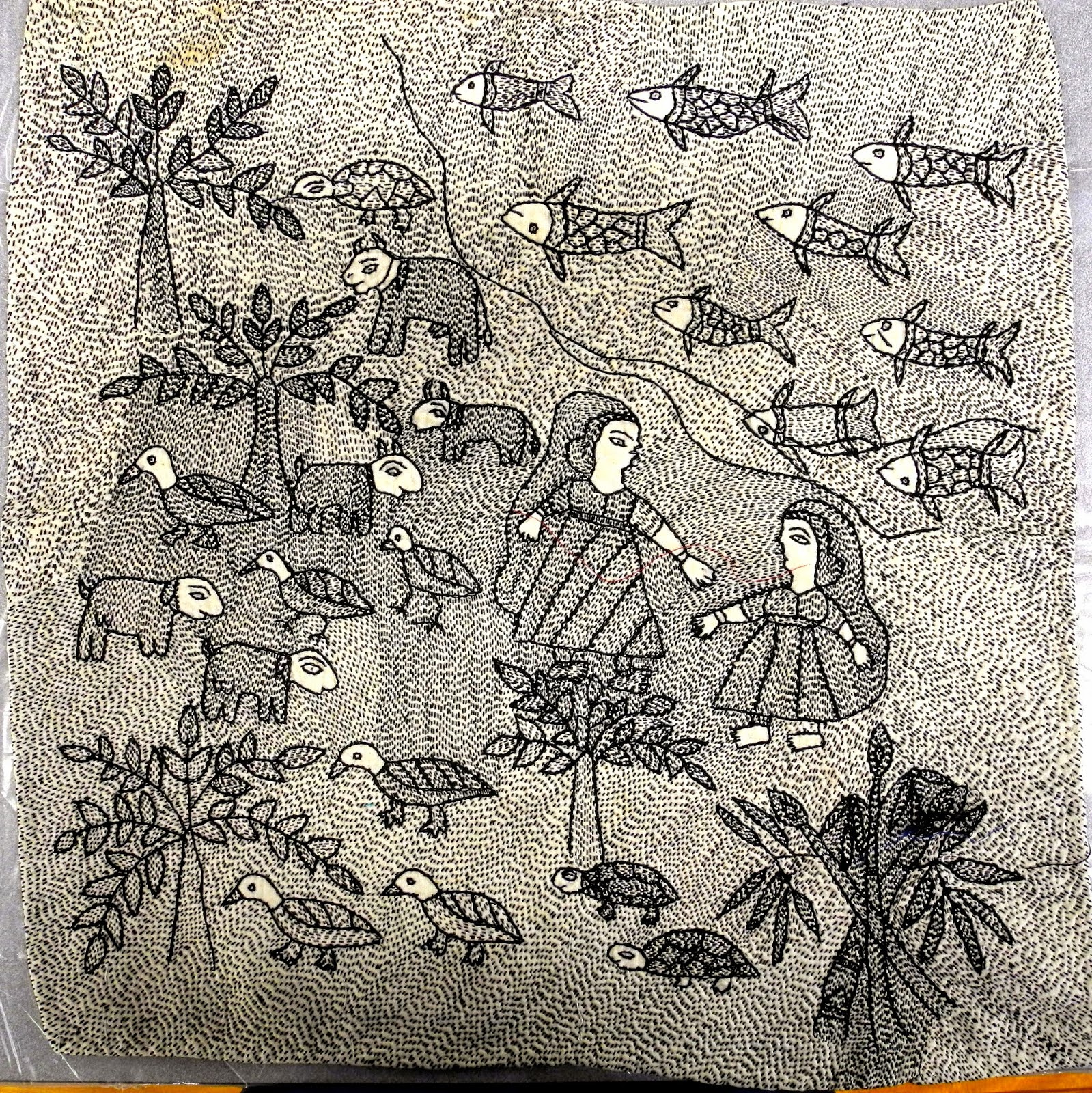A blog hop is kind of a "tag, you're it" thing for bloggers. Except you get to be invited, and can decline.
I was invited to join the blog hop by
Judy Warner.
I can't remember how I met Judy, but we have become friends via our
blogs, emails and a SAQA conference. Judy travels all over the world and her travels influence her art quilts. Take a look at her
blog and website -
http://judywarner.com/about-the-artist/ and enjoy getting to know her and her work.
I've
been enjoying the challenge of folding and dyeing a full yard of fabric
and making it into a complete composition. "Begin Again",
the piece that I just finished, was dyed a couple of times and then
plexiglass circles were used to create different sized circles on the fabric. I did cut the piece into a 1/3 and 2/3 so they could both be dyed in the same dye bath, but without wrinkling the fabric to add more lines. Here's the result after 3 dye baths.
Photoshop Elements is a good software program to use to try out design ideas without cutting into fabric. It's a useful tool, especially when working with shibori dyed fabrics and you don't want to lose lines or shapes to cutting and then decide it was better with out the addition. Here are a couple of the ideas I tried out -
I liked the lower one better because the addition of lines and the circle of a different size were more interesting. I used some thickened bleach to make the lines on the bottom and some circles around the piece. Adding the large circle didn't really add to the composition so I didn't do it in bleach. It needed some contrast so out came some black yarn.
The contrast really added some pop to it, but the yarn sitting on top of the dyed fabric seemed too different and didn't fit with the rest of the work. Out came the fabric paint!
Here it is painted, quilted, faced and photographed. the photo's are not of the quality for entering a juried exhibit - they are for my records. Here is a detail shot of the quilting. The thread is actually an olive green that is subtle, but contrasts very nicely with the dyed colors. This image doesn't do it justice.
This is the process I have come to use with most of my work. Sketching comes into play for machine quilting design, and occasionally to solve composition problems. Taking photo's along the way and looking at them on the computer or in a print is very helpful.
Working intuitively is a common practice and I think there are many other artists who work that way. It's a journey, a process, sometimes a struggle. When the work is finished, I'm usually finished with it too, and don't mind selling it, or sending it out to be admired in an exhibit. It's wonderful to hear that others react to my work, and the process gives me great satisfaction.
I have invited three people to join the blog hop, and they are all people who I really like as well as respect their work. On Monday, Oct. 13, they will post to their blogs, and tag other bloggers so please visit their blogs and make a note to check back next week.
Cheryl Rezendes is the author of
Fabric Surface Design, a wonderful encyclopedia of surface design techniques. I often refer to her book for ideas of how to accomplish a look I want. Her delicate art quilts are posted on her blog and website -
http://www.cherylrezendes.com/
Kate Themal is an award winning art quilter who does representative work with real feeling. Her work is meticulous as well as thoughtful. Her latest quilt is of her grandmother's sewing machine and it tells a story. She blogs at
http://katethemel.blogspot.com/
Diane Wright is one of the friendliest art quilters I know. Her quilts reflect her vibrancy and world travels. She's so productive; I know I could learn from her! Check out Diane's blog and check back when she posts about her travels - she goes to interesting places.
http://dianewrightquilts.blogspot.com/
Thanks for reading, and please leave a comment if you have time and the inclination. It's always good to hear from readers!





















































